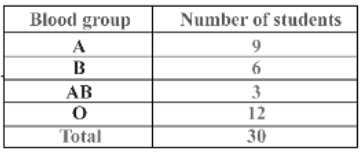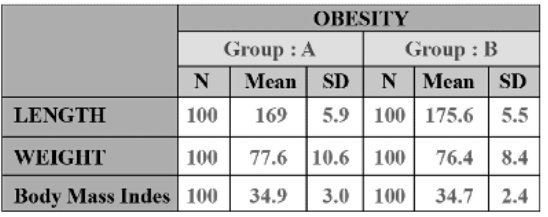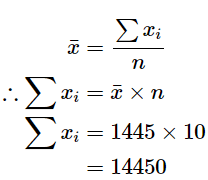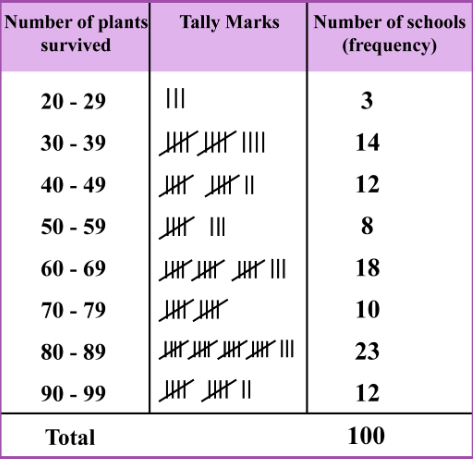Summary statistics | The Complete SAT Course - Class 10 PDF Download
Summary statistics helps us summarize statistical information. Let's consider an example to understand this better. A school conducted a blood donation camp. The blood groups of 30 students were recorded as follows.
A, B, O, O, AB, O, A, O, B, A, O, B, A, O, O,
A, AB, O, A, A, O, O, AB, B, A, O, B, A, B, O.
We can represent this data in a tabular form.
This table is known as a frequency distribution table.
You can observe that all the collected data is organized under two columns.
This makes it easy for us to understand the given information.
Thus, summary statistics condenses the data to a simpler form so that it is easy for us to observe its features at a glance.
Summary Statistics
- Definition of Summary Statistics: Summary statistics is a part of descriptive statistics that summarizes and provides the gist of the information about the sample data.
- Summary statistics deals with summarizing statistical information.
- This indicates that we can efficiently use summary statistics to quickly get the gist of the information.
- Statistics generally deals with the presentation of information quantitatively or visually.
- "Summary statistics" is a part of descriptive statistics.
- Descriptive statistics deals with the collection, organization, summaries, and presentation of data.
What Is a Summary Statistics Table?
- Big data related to population, economy, stock prices, and unemployment needs to be summarized systematically to interpret it correctly.
- It is usually done using a summary statistics table.
- The summary table is a visual representation that summarizes statistical information about the data in a tabular form.
 Here are a few summary statistics about a certain country:
Here are a few summary statistics about a certain country:
- The population of the country now stands at 1,351,800.
- 60% of people describe their health as very good or excellent.
- 20,800 have immigrated into the country while 21,500 people emigrated out of the country.
- The per capita gross annual pay now stands at $21,000.
- There were 105,023 recorded crimes.
- Unemployment is at 2.8%.
How Do you Explain Summary Statistics?
- Summary statistics is a part of descriptive statistics that summarizes and provides the gist of information about the sample data.
- Statisticians commonly try to describe and characterize the observations by finding:
- a measure of location, or central tendency, such as the arithmetic mean
- a measure of statistical dispersion like the standard mean absolute deviation
- a measure of the shape of the distribution like skewness
- if more than one variable is measured, a measure of statistical dependence such as a correlation coefficient
How Do you Analyze Summary Statistics?
- In a class, the collection of scores obtained by 30 students is the description of data collected.
- To find the mean of the data, we will need to find the average marks of 30 students.
- If the average marks obtained by 30 students is 75 out of 100, then we can derive a conclusion or give judgment about the performance of the students on the basis of this result.
Important Notes
- Summary statistics helps us get the gist of the information instantly.
- Statisticians describe the observations using the following measures.
- Measure of location, or central tendency: arithmetic mean
- Measure of statistical dispersion: standard mean absolute deviation
- Measure of the shape of the distribution: skewness
- Measure of statistical dependence: correlation coefficient
Measures of Location
- The arithmetic mean, median, mode, and interquartile mean are the common measures of location or central tendency.
Measures of Spread
- Standard deviation, range, variance, absolute deviation, interquartile range, distance standard deviation, etc. are the common measures of spread/dispersion.
- The coefficient of variation (CV) is a statistical measure of the relative spread of data points around the mean.
Graphs / charts
Some of the graphs and charts frequently used in the statistical representation of the data are given below.
- Graphs:
- Line graph
- Bar graph
- Histogram
- Scatter plot
- Frequency distribution graph
- Charts:
- Flow chart
- Pie chart
Solved Examples on Summary Statistics
Example 1: The mean monthly salary of 10 workers of a group is $1445 One more worker whose monthly salary is $1500 has joined the group. Find the mean monthly salary of 11 workers of the group.
Here, n = 10 ,
Using the formula,
10 workers salary = $ 14450
11 workers salary = 14450 + 1500
= $ 15950
Average salary = 15950/11
= 1450
∴ Average salary of 11 workers
= $ 1450
Example 2: The pie chart shows the favorite subjects of students in a class.
Using the information given in the pie chart, determine the percentage of students who chose English.
We know that 144∘ + 36∘ + 72∘ + 108∘ = 360∘
The percentage of students who chose English
= 72/360 × 100
= 20
∴ The percentage of students who chose English = 20
Example 3: On World Environment Day, 100 schools decided to plant 100 tree saplings in their gardens. The following data shows the number of plants that survived in each school after one month.
The following data shows the number of plants that survived in each school after one month.
Using this data, can you find the number of schools that were able to retain 50% of the plants or more?
- We need to represent this large amount of data in such a way that a reader can understand it easily.
- To include all the observations in groups, we will create various groups of equal intervals.
- These intervals are called class intervals.
From this table, it is clear that 50% or more plants survived in (8 + 18 + 10 + 23 + 12) schools.
∴ 71 schools were able to retain 50% or more plants in their garden.
|
433 videos|220 docs|166 tests
|



















